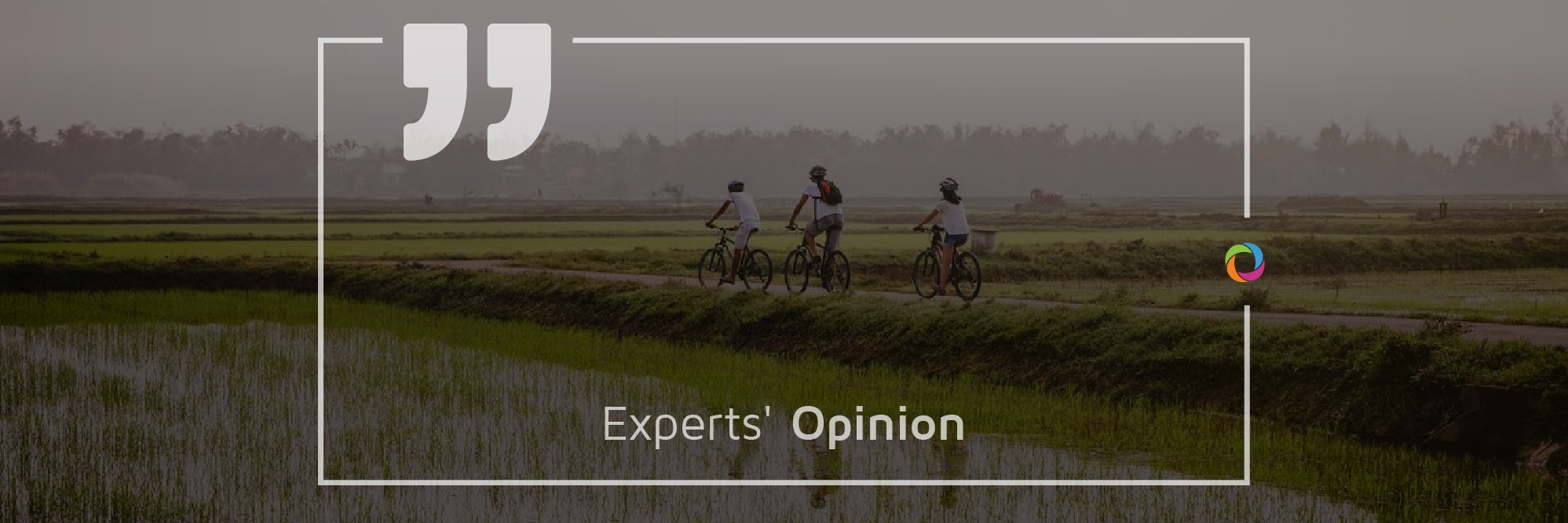Poverty in Vietnam continues to fall, says the latest World Bank report. According to the World Bank, improving income from highland agriculture can help Vietnam further reduce poverty, which has fallen by almost 4 percentage points since 2014, to 9.8 percent in 2016. We have asked several agriculture experts to share their opinions regarding the impact of agricultural land on poverty and inequality in Rural Vietnam and what needs to be changed in the agriculture sector in developing countries, so it could act as a poverty counteraction.
How does agriculture help poverty and inequality reduction in Vietnam?

„72 percent of Vietnam’s poor is composed of ethnic minorities and concentrated in highland areas where there exist many disadvantages such as poor infrastructure and unfertilized soil. Their livelihoods depend most exclusively on agriculture. Each household’s methods of cultivation have an important impact on agriculture income differences. Most of the poor farmers in these areas usually grow less profitable crops such as low-quality rice, cassava or maize instead of profitable plants such as coffee, herb and rubber. Therefore, the development of agriculture would help these smallholder farmers improve the ability to use land more efficiently and determine appropriately crops that have improved their earnings, which in turn contributes greatly to poverty reduction. As the poor households’ income has increased, their children will have a better condition to go to school and, in doing so, would increase their chance to participate in labor market of other higher income’s sectors such as tourist or manufacture. Moreover, supportive policies toward agriculture also can be effectively combined with roads upgrade and improvement of telecommunication systems in remote areas. These changes allow poor access-basic services such as education and healthcare. Hence, agriculture is an effective treatment for both poverty and inequality reduction in Vietnam.”

„Poverty in Vietnam is highly concentrated in rural areas, especially in remote highlands, which is home to many ethnic minorities. In those areas, there are limited transportation infrastructure, a weak welfare system, and service shortage. In that condition, the development of agriculture contributes to create more jobs, enhance infrastructure, and increase financial support for the indigenous people. The transformation of agriculture also requires changes in farmland use patterns, strengthening land user rights, and improving the knowledge/skills of the poor farmers to have better productivity. Especially, agriculture in Vietnam has recently caught the attention of young high-educated people who care more about sustainable agricultural practices, higher value chains, and proactively involve the poor local people in their production communities. All those factors together lead to higher income, broaden opportunities, and reduce inequality in access to financial and non-financial capital such as education or healthcare for smallholder farmers.”
What needs to be changed in the agriculture sector in developing countries, so it could act as a poverty counteraction?

„First of all, farming methods must be changed and farmers need better approaches. Many people think that smallholders lack of knowledge about productive farming. This is both wrong and correct. They may have less chance to reach higher education but they definitely understand their land, their crop rather than anyone through experiences. The more important point is that they just care about the visible short-term benefits of cultivation. At the same time, farmers are not scientists and should not be taught like students at the universities. The other possible approach could be selecting only few exemplary farmers within their community, working side by side with them through several cultivations. Once their neighboring farmers see how they benefit from these new techniques or transferring to crop other plants, they would follow proactively. Secondly, the micro-finance issue must be addressed. A significant number of farmers still do not have access to micro-finance services due to the complicated procedures or lack of information despite the expansion of outreach and available funding sources. Furthermore, in order to decline poverty, the poorest of the poor should be the most targeted clients. Last but not least, increasing agricultural value chains would help poor farmers escape from poverty as higher-quality products can generate more income for all participants along the chain, include farmers working in the production stage.”

„Agriculture should be determined as an important poverty reduction and rural development driver. In fact, poor people engage proactively in agriculture when they find it profitable and secure. Therefore, it is vital to bring them necessary tools such as land rights, skills, and knowledge, infrastructure, financial incentives in agriculture. We can achieve those tools by changing policy, improving the education system with an early orientation to agriculture, organizing training courses for the poor farmers, transforming crop to non-crop cultivation, developing farmer communities, providing no-interest loans, and other technical supports. Besides that, engaging high-quality labor force in the agricultural value chains can be a pull factor that leads to positive impacts on the grass root, in particular, the poor farmers who work mainly in the production stage.”
Check more than 100 job opportunities in the agriculture sector here.

